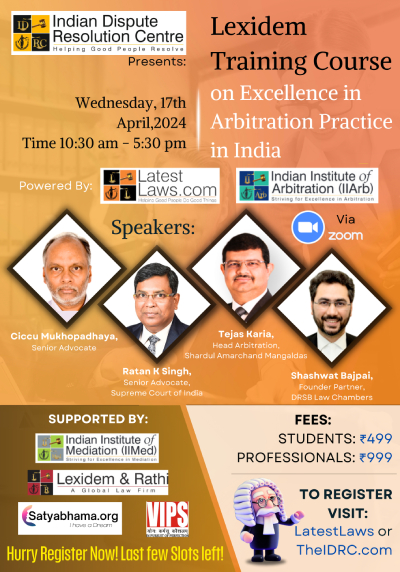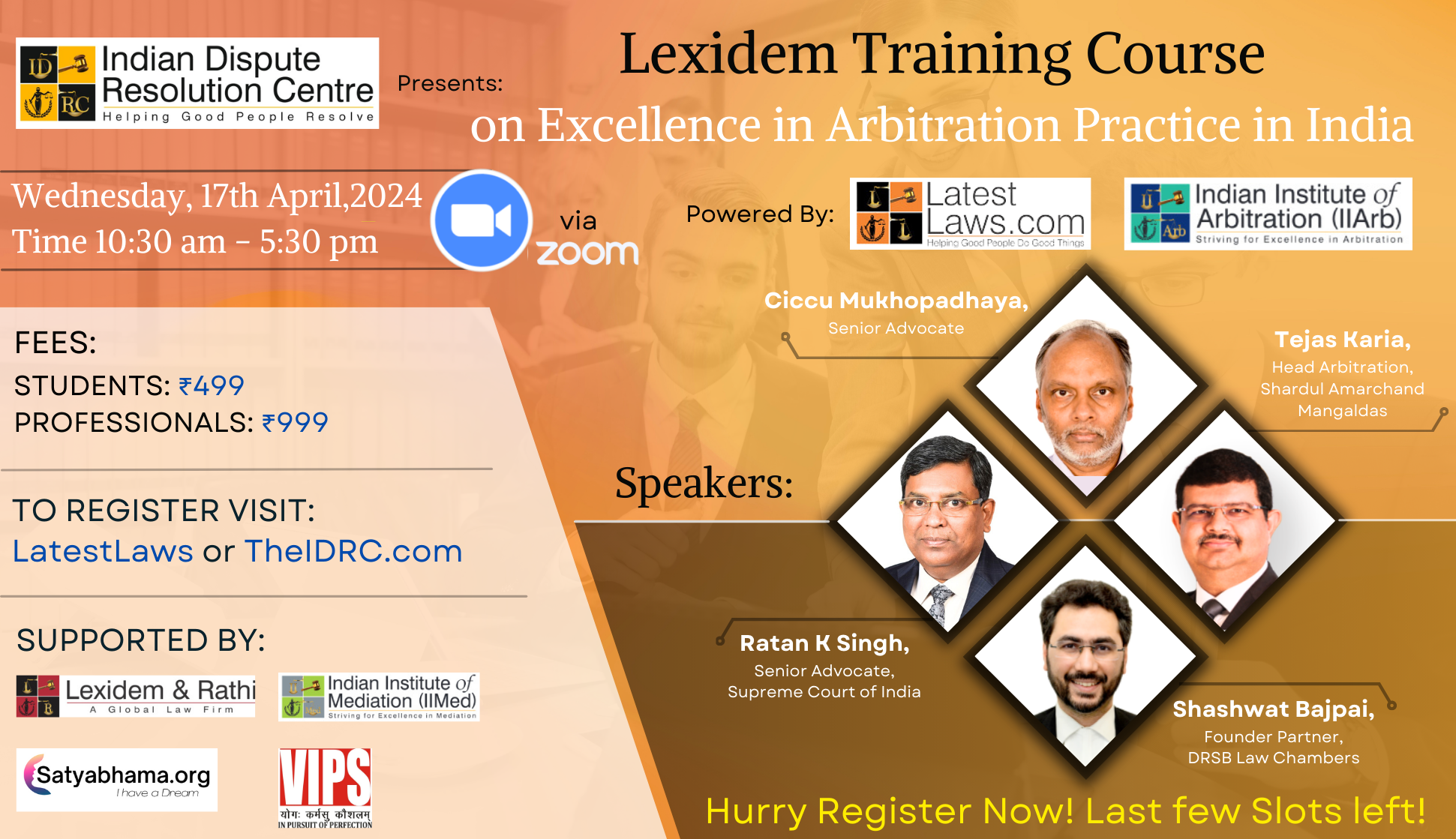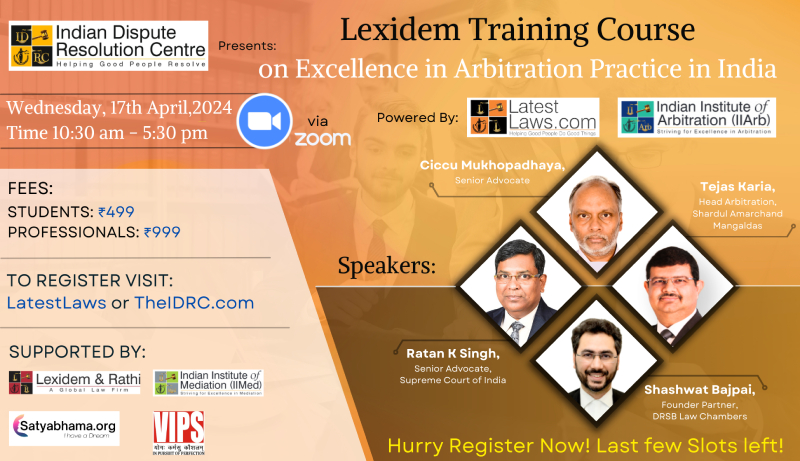August 8, 2018:
Analysis of Law on Adoption in India By Ekta Kumari (Download PDF)
The Author, Ekta Kumari is a 5th Year student of BBA.LLB (H) at Banasthali Vidyapith, Jaipur, Rajasthan. She is currently interning with LatestLaws.com.
INRODUCTION
India is a country with great religious diversity. Every religion has its own set of practices which it follows. The Indian legal system includes customs along and legislations to form law. The Indian society, in personal matters is governed by the customs of the four most prevalent religions Hindu, Muslim, Christians and Parsi. The personal laws of Hindus and Muslims find their sources in their respective religious books.Children are considered as future of country. While on one hand children have right to pampered, taken care of and given all the necessities for development, on the other hand there are many children being abandoned per year in India. In some cases, these children become victims of human trafficking and sexual violence. In fortunate cases, the abandoned children are taken to any adoption agency. Such cases, of children adoption gives a chance of second life. In its simplest of senses, adoption is a process whereby a person assumes the parenting for another and, in doing so, permanently transfers all rights and responsibilities, along with filiations, from the biological parent or parents.
- ORIGIN OF ADOPTION CONCEPT
In early 17th Century Dattaka-mīmāmsā by Nanda-Pandita was considered to be the classical work on the topic of Adoption and subsequently used by the British authorities as Hindu law. Later it was translated by Sutherland in 1821. Another renowned work Dattaka chandrika is attributed to Kuvera. Indian culture has its distinctive paradoxes. Indian mythology is full of stories where babies were born in one place and brought up elsewhere by non parents. The tenets of Hindu Law clearly state that 12 kinds of sons were recognized and one of them was the Dattaka son, i.e, a son whom his father or mother gives as a son affectionately in a time of distress to one who is of the same caste. Under Indian law there is no specific law for child adoption but due to judicial activism there are lot of cases which have set precedents for the contiguous issues and other complexities in child adoption.
During the early part of 20th century it was common for parents to wait 3-5 years after their initial application to a private adoption agency before they had a healthy infant placed with them. The civil rights movement of the 1960s was accompanied by an increase in the number of l adoption.
- MEANING OF ADOPTION
Adoption is a legal process by which a child is placed with a married couple or a single female who agree to raise her as their own child and assume all responsibility for her. Adoption is a legally approved way to formulate a parent-child relation between people who are not associated with birth. This two-way process has facilitated childless parents to have a child.
Adoption is the legal act of permanently placing a child with a parent or parents other than the biological parents. Adoption results in the severing of the parental responsibilities and rights of the parents and the placing of those responsibilities and rights onto the adoptive parents. It is a worldwide institution. Almost all religions and mythologies contain some reference or other to adoption. In contemporary world, the thirst of concept of adoption has changed from providing child to childless to providing home to homeless.
The objectives of adoption are as follow:
- To get old-age protection by the adopted child.
- To perpetuate family name and fame.
- To keep secured the family property.
- To solemnize of last rites and rituals of parents.
- ADOPTION IN INDIA
In India, there is a defined legal process that provides legitimate rights to both the adopted child as well as adoptive parents. The objective of these enactments is to protect the rights of an adopted child and transfers all the legal obligations and rights from the biological parents to the adoptive ones. Indian citizens can adopt in India under three major legislations:
- Hindu Adoption and Maintenance Act of 1956 (Hindus, Jain, Sikhs or Buddhists)
- Guardian and Wards Act of 1890 (Foreign citizens, NRIs and Indian nationals who are Muslims, Christians or Jews)
- Juvenile Justice Act of 2000 (a part of which deals with Adoption of children by non-Hindu parents)
- The Hindu Adoption and Maintenance Act, 1956 (HAMA)
This Act covers Hindus, Buddhists, Jains or Sikhs. Some relevant parts of the Act are:
- Married couples or single adults can adopt
- Legally the man adopts with the consent of his wife
- A single man or woman can adopt
- If a biological child already exists in the family, a child of the opposite sex has to be adopted
- Children adopted under this Act get the same legal rights as a biological child might
- Children under the age of 15 years can be adopted
- A single man adopting a girl should be at least 21 years older than the child
- A single woman adopting a boy should be at least 21 years older than the child
- Adoption under this act is irrevocable.
The person can be adopted
- He or she is a Hindu
- He or she has not already been adopted
- He or she has not been married, unless there is a custom or usage applicable to the parties which permits persons who are married being taken in adoption
- He or she has not completed the age of fifteen years unless there is a custom or usage applicable to the parties which permits persons who have completed the age of fifteen years being taken in adoption.
Other conditions for a valid adoption are fulfilled
- If the adoption is of a son, the adoptive father or mother by whom the adoption is made must not have a Hindu son, son's son or son's son's son living at the time of adoption
- If the adoption is of a daughter, the adoptive father or mother by whom the adoption is made must not have a Hindu daughter or son's daughter living at the time of adoption;
- If the adoption is by a male and the person to be adopted is a male, the adoptive father is at least twenty one years older than the person to be adopted
- If the adoption is by a female and the person to be adopted is a male, the adoptive mother s at least twenty one years older than the person to be adopted
- The same child may not be adopted simultaneously by two or more parents; the child to be adopted must be actually given and taken in adoption with an intent to transfer the child from the family of birth.
- The Guardians and Wards Act, 1890 (GWA)
Before the Juvenile Justice (Care and Protection) Act of 2000, this was the only legislation that allowed non-Hindus to adopt. However, this act ended up being the first secular law that allowed for a child to be adopted in India. The salient points of this Act are:
- Anyone under the age of 18 years can be a ward;
- The guardianship can be revoked by the courts or by the guardian;
- A will is required for any property/goods to be bequeathed to the child;
- This will can be legally contested by ‘blood’ relatives;
- Both spouses can legally be guardians
- Single people can adopt without any age difference restrictions.
The Juvenile Justice (Care and Protection) Act of 2000, amended in 2006 (JJ Act)
The JJ Act is meant mainly for the care and rehabilitation of children in conflict with the law. There was the need for a law that would allow children the same rights, whether they were adopted or biological. There was also the need for a law that delinked adoption from the religion of the adoptive parent(s). The JJ Act filled this space and a tiny section was added on for adoption. The Amendment Act of 2006 has since expanded the provisions. The main strengths of this Act are:
- Any Indian citizen can adopt a child who is legally free for adoption;
- The adoptee gets the same rights that a biological child might;
- The religion of the adoptive parent is not relevant;
- Single people can adopt;
- The adoption is irrevocable;
- Some time limits have been set to ensure that children are considered legally free for adoption earlier; and
- The thrust is on the best interest of the child.
The Act covers all of India, it is only possible to adopt under this Act in areas where the JJ Boards (provided under the Act) have been constituted. This is an ongoing process, with a majority of states issuing notifications constituting these boards.
CONSTITUTION OF INDIA
The Government of India is fully sensitized and committed to the rights and welfare of children. The Constitution of India provides Fundamental Rights under Chapter III. One of these rights is provided under Article 21. The main object of Article 21 is that before a person is deprived of his life or personal liberty by the State, the procedure established by law must be strictly followed. Right to Life means the right to lead meaningful, complete and dignified life. It does not have restricted meaning. Thus article 21 gives every child to live with dignity. The Constitution of India under Article 24- Chapter on “Fundamental Rights of the Citizens” provides the right against exploitation of the children below 14 years.
Therefore, religion specific nature of adoption laws should be scraped and formation of a Uniform Civil Code should take place. Article 45 of the Directive Principles of the State Policy in the Indian Constitution envisages for free and compulsory education of children. India has prepared a National Policy for children in 1974 under which Ministry of Social Justice and Empowerment (now known as Ministry of Women and Child Development) has got the mandate to enact laws regarding welfare of children. In the Indian Constitution, there is a chapter entitled "Directive Principles of State Policy," which sets out certain fundamental obligations of the State. While they are fundamental in the governance of the country, the provisions are not judicially enforceable.
The Act lays down stipulations for a valid adoption. The only legal effect of a valid adoption which the Act contemplates and provides for is that an adopted child shall be deemed to be the child of his or her adoptive parents for all purposes with effect from the date of such adoption.
- ADOPTION RULE IN DIFFERENT RELIGION
- HINDU LAW
Hindu law is the only law in India which treats an adopted child as being equal to a natural born child. The reason for this is mostly because of the belief that a son was indispensable for spiritual as well as material welfare of the family. Under the old Hindu Law, male was to be adopted, restrictions were imposed based on Caste and Gotra. A female child could not be adopted under the Hindu Law. Under the old Hindu law, only the male had a right to adopt and the consent of his wife to the proposed adoption was immaterial.
But such restrictions have changed in the course of time. Such gender biases have been minimized in today’s modern society. Under the modern Hindu Law, every Hindu, male or female has the capacity to make an adoption provided he or she has attained majority and are of sound mind. Most of these laws, rules and regulations have been enumerated in the Hindu Adoption and Maintenance Act of 1956.
- MUSLIM LAW
Under the Muslim law, the father enjoys a dominant position. It also makes a distinction between guardianship and custody. In Sunnis and Shias schools however agree that father while alive is the sole guardian. Mother is not recognized as a natural guardian even after the death of the father.
Adoption is a little different under Islamic law than the usual adoption practices that are followed. The Islamic term for what is generally called adoption is kafala. Like everything else in Islamic Law, the practice of adoption is highly regulated. A guardian/ward role is played out rather than a parent. This relationship has specific rules. These rules are mainly to preserve the integrity of the family line.
Adoption is certainly not prohibited. What is unlawful is to attribute one’s adopted child to oneself, as if there is a biological relationship. This is because Islam seeks to safeguard biological lineage and not confuse lineage. There are a few rules in Islam surrounding the concept of Adoption:
- An adopted child retains his or her own biological family name (surname) and does not change his or her name to match that of the adoptive family.
- An adopted child inherits from his or her biological parents, not automatically from the adoptive parents.
- If the child is provided with property/wealth from the biological family, adoptive parents are commanded to take care and not intermingle that property/wealth with their own. They serve merely as trustees.
It is also important to note that in Islam, the extended family network is vast and very strong. It is rare for a child to be completely orphaned, without a single family member to care for him or her. Islam places a great emphasis on the ties of kinship a completely abandoned child is practically unheard of. Islamic law would place an emphasis on locating a relative to care for the child, before allowing someone outside of the family, much less the community or country, to adopt and remove the child from his or her familial, cultural, and religious roots. This is especially important during times of war, famine, or economic crisis — when families may be temporarily uprooted or divided.
- CHRISTIAN LAW AND PARSI LAW
The personal laws of these communities also do not recognize adoption and here too an adoption can take place from an orphanage by obtaining permission from the court under Guardians and wards act. A Christian has no adoption law. Christians have no adoption laws and have to approach court under the Guardians and Wards Act, 1890. It clearly lays down that father’s right is primary and no other person can be appointed unless the father is found unfit. This Act also provides that the court must take into consideration the welfare of the child while appointing a guardian under the Act.
There is no specific statute enabling or regulating adoption among Christians in India. In the absence of a statutory or customary adoption recognized by courts, foster children are not treated in law as children. On death of the foster parents, their estate is distributed among legal heirs of the intestate, to the detriment of foster children. Christians in India can adopt children by resort to section 41 of the Juvenile Justice (Care and Protection of Children) Act 2006 read with the Guidelines and Rules issued by various State Governments.
The personal laws of these communities also do not recognize adoption and here too an adoption can take place from an orphanage by obtaining permission from the court under Guardians and wards act. A Christian has no adoption law.
- GENERAL PROCEDURE FOR ADOPTION
- Meeting the eligibility criterion and adopting parent must hold the capacity to adapt.
- Visiting any voluntary coordinating institution or Child Welfare Agency in the region where they wish to seek or presently reside.
- Understanding the requirements of the respective institution and registering after filing an application form.
- The Agency conducts a preliminary interview where they evaluate the intention and reason behind adoption and other relevant factors like emotional health, quality of marital relations, financial and family background, their attitude towards adoption etc.
- The Agency also verifies documents as submitted along with the application form.
- The institution seeks a placement agency for adoption that meets the legitimate eligibility conditions as required by the Act as well as the application filed by the adopting person.
- A ‘Home-Study’ report is formed for vetting and consideration by the institution.
- A meeting is arranged between the adopting parents and the child as found suitable by the agency.
- Adopting parents may appoint a doctor for medical examination of the child.
- As the decision is made by adopting parents, they can file a petition for adoption before the court of appropriate jurisdiction.
- The Court calls the parties for hearing and is required to settle the adoption case within 2 months from the date of submitting the application.
- After receiving the decree from the court, the adoption is final & binding.
- The role of the institution continues as they have to do a periodical post-adoption follow up.
- Once the valid adoption is done, it can’t be rescinded by the adoptive parents and also the adopted child also can’t retreat back to his/her biological parents.
- If there is any fraud in the adoption proceedings, only the court has the authority to cancel the adoption decree.
- CASES RELATED TO ADOPTION
- Ankush Narayan v. Janabai AIR 1966 Bom 174,
Court held that on adoption by a widow, the adopted son becomes the son of the deceased adoptive father and the position under the old Hindu law as regards ties in the adoptive family is not changed.
- Guradas v. Rasaranjan AIR 2006 SC 3275.
Adoption is made when the actual giving and taking had taken place and not when the religious ceremony is performed like Datta Homam. For a valid adoption, it would be necessary to bring on records that there has been an actual giving and taking Ceremony.
- Shrimati Asoka Mukherjee Vs. Gandhi Das and Anr., (2002) 3 CAL LT 307 (HC)
Held in absence of evidence of giving and taking ceremony adoption of defendant not proved. It has not been proved that the defendant No. 1 was actually given and taken in adoption by Kalipada and Sabitri Bala. The persons present at the time of adoption did not come forward to depose. Court also said it has been proved that the plaintiff is the owner of the suit premises and the defendant No. 1 has no right, title and interest in respect of suit premises as a tenant inasmuch as his claim that he was the adopted son of Kalipada and Sabitri Bala has not been proved.
- Darshana Gupta Vs. None and Ors.AIR 2015 Raj 105
Held, When the child to be adopted is orphaned, abandoned or surrendered child or a child in need of care and protection as defined in Juvenile Justice Act, the bar imposed by Section 11 (i) and (ii) of Hindu Adoption and Maintenance Act does not bar the Hindu having biological child from adopting the child of same gender. In changed social scenario, Acts were liable to be construed harmoniously to ensure rehabilitation and social reintegration of orphaned, abandoned and surrendered children - Therefore, adoption of child girl to Appellant was held maintainable
- Karam Singh & Ors Vs Jagsir Singh & Ors., 2015 (3) RCR (Civil) 45 (P&H)
Adoption – Hindu Adoptions and Maintenance Act, 1956, Section 16 –Presumption of validity – An adoption deed comes into effect the moment it is signed or thumb marked by the natural parent and the adopting parent – The only consequence of non registration or a defective registration is that the presumption of truth, raised under Section 16 of the Act shall not arise – Adoption deed shall have to be proved like any other ordinary fact or document.
- CONCLUSION
The discussion shows that law provides a status to the adopted child as well as the adoptive family. Communities other than the Hindus do not have a foolproof mechanism of governing adoptions on par with the Hindus. There is no prohibition of adoption in the religious laws of Parsis, Christian, etc., though, none of these communities have personal law of adoption or statutory law to that effect. It will be thus custom which governs adoption in their case.
Adoption is a noble cause, which brings happiness to kids, who were abandoned, or orphaned. This gives a chance for the humane side of civilization to shine through. It’s a beneficial program where the child is treated as the natural born child and given all the love, care and attention. Adoption is the creation of a new, permanent relationship between an adoptive parent and child. Once this happens, there is no legal difference between a child who is adopted and a child who is born into a family.
Adoption once validly made is final and cannot be revoked. The adopted child could not renounce the adoption. The law has further made an express prohibition against the payment of money or other reward in consideration of adoption.
Picture Source :




























